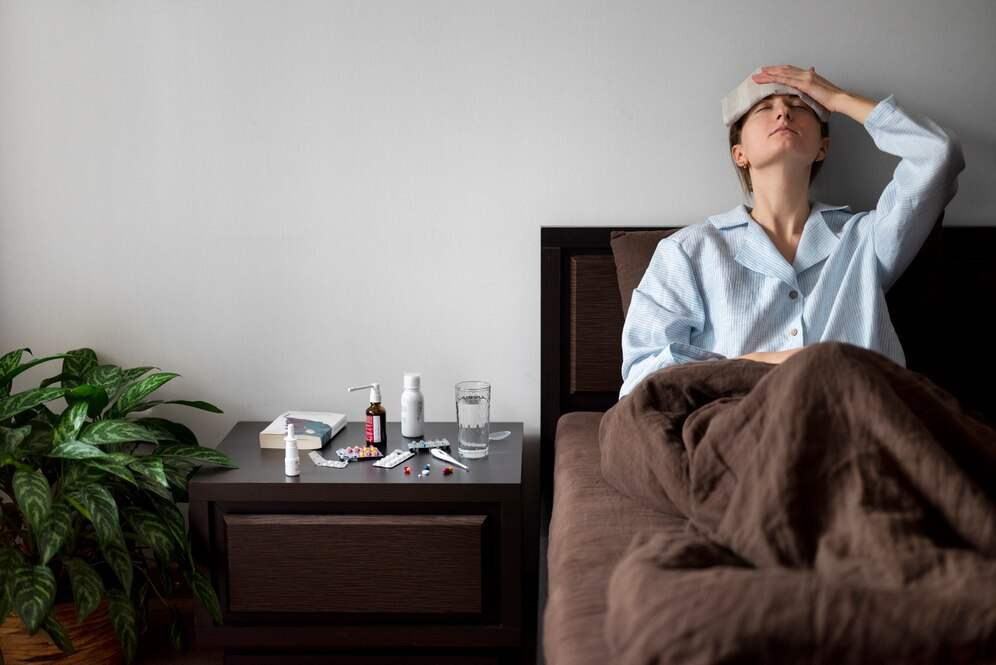Unveiling The Silent Threat: Understanding Sepsis – Causes, Symptoms, And Lifesaving Treatment Strategies
Table of Contents
Sepsis, a type of blood poisoning, is a potentially fatal medical emergency. It is your body’s excessively aggressive reaction to an illness. According to the Centers for Disease Control and Prevention (CDC), Sepsis strikes at least 1.7 million adults annually in the US. If Sepsis is not identified and treated promptly, it can result in septic shock, organ failure, and even death.
Sepsis has been divided into three stages by some medical researchers. An elevated heart rate and temperature characterize the first, least severe stage. The second stage is more powerful and is marked by signs of breathing difficulties and potential organ problems. The third stage, known as septic shock or severe Sepsis, is the most painful and is defined by potentially fatally low blood pressure.
Researchers do not universally accept these stages; others do not even take Sepsis into account at all.
What Causes Sepsis?
Sepsis only occurs when there is an infection anywhere in your body, like:
- Infected lung
- Intra-auricular infection
- Skin disease
- Stomach infections, such as those caused by a gallbladder or appendicitis,
The most frequent cause of these diseases is bacteria. Sepsis can also result from them and be caused by viruses, parasites, or fungi. Sometimes, a blood vessel or urine catheter is the route by which the germs enter the body. Sepsis is more likely to result from an infection circulating throughout the body through the bloodstream. Sepsis is less likely to result from a single-organ infection.
Blood poisoning is another non-medical term used to refer to Sepsis. However, this term is misleading, as poison is not something that causes Sepsis.
Sepsis Risk Factors
Sepsis risk is elevated by certain medical illnesses and disorders compromising your immune system’s capacity to fight infection. These consist of:
- AIDS/HIV
- Diabetes Malignancy
- Liver illness
- Severe burns
- Respiratory malfunction
- Alcohol Abuse
- Other immune-system-related disorders
- Sepsis risk also increases in older adults, toddlers, and babies.
Treating these medical issues with proper attention lowers the risk of Sepsis.
Signs and Symptoms of Sepsis

To diagnose Sepsis in an adult patient, the infection must have a known or suspected bacterial source and at least two of the following symptoms:
- Abnormal mental state (such as delirium, altered consciousness, or mental confusion)
- Rapid breathing
- Low systolic blood pressure
However, patients may also experience a wide range of additional sepsis-related signs and symptoms. Tachycardia OR accelerated heartbeat, fever, hypothermia, a drop in blood carbon dioxide (PaCO2), chills, lightheadedness, exhaustion, shivering, flushing of the face, dyspnea, low urine production, discoloration of the skin, organ dysfunction, shock, and insomnia are some other common and early signs of Sepsis.
Although the symptoms experienced by elderly patients are similar to those of adult patients, confusion is frequently the initial symptom, coupled with chills, weakness, potentially quicker breathing, and a dusky skin look. While symptoms in pediatric patients (babies, toddlers, and kids) might sometimes resemble those in adults, fever and decreased urine production are the most typical.
Children may exhibit indicators of weakened mental status appropriate for their age and tiredness. If a newborn’s rectal temperature is 100.4 F or above, sepsis neonatorum, also known as neonatal Sepsis, may be suspected in infants as young as 28 days. Additional indicators of neonatal Sepsis include fever after childbirth (which could indicate puerperal Sepsis from an infection in the mother’s reproductive tract), unclear or foul-smelling amniotic fluid, seizures, and vomiting.
How to Diagnose and Medically Assess Sepsis?
When at home, it is often not too difficult to measure heart rate (count pulses per minute), fever, hypothermia, or even breaths per minute. The source of the infection may be harder to identify. Still, if the patient exhibits infection-related symptoms of Sepsis, including fevers, dysuria, active coughing, or pus-filled wounds, it is generally simple to infer Sepsis. However, a lab is typically used to determine the white blood cell count, PaCO2 (blood carbon dioxide levels), and acidosis (low blood pH).
A doctor uses laboratory tests and clinical judgment to make the final diagnosis of Sepsis in the majority of cases. In addition to examining, the healthcare professional will inquire about the patient’s medical history.
A blood test is frequently used to confirm the infection. However, a blood test may not show signs of infection in Sepsis patients on antibiotics. A blood test may not be able to identify specific conditions that can lead to Sepsis.
The following tests are possible additional ones:
- Blood gases
- Tests for kidney function
- To assess the possibility of bleeding, measure the platelet count, fibrin degradation products, and coagulation times (PT and PTT).
- Count of white blood cells
- Differentiation of white blood cells
What are the Possible Treatment Approaches?
Sepsis patients receive treatment in a hospital’s intensive care unit (ICU). This is because treating Sepsis requires constant observation. Heart rate, blood pressure, and breathing will all be continuously monitored. There will be frequent blood and urine testing. We will closely monitor your condition and modify your treatment plan as necessary.
Initially, you will most likely be prescribed one or more effective antibiotics against various germs. A particular type of bacteria and a suitable antibiotic can be identified from the results of sensitivity tests and cultures. Draining infection pockets could be necessary. We refer to these as abscesses. An infected body part may occasionally need to be removed by a surgical procedure.
You will require additional therapies to support the body in addition to antibiotic treatment, such as:
- More oxygen to maintain appropriate oxygen levels
- Intravenous (IV) fluids to assist in returning blood pressure and organ blood flow to normal
- If breathing becomes difficult, a ventilator and breathing tube
- Dialysis in the event of renal failure
- Drugs that increase blood pressure
- Additional therapies to avoid issues like pressure ulcers and deep vein thrombosis
- Insulin to maintain ideal blood sugar levels even if you’ve never had diabetes before
The majority of patients with mild Sepsis do recover. However, Sepsis still kills some patients despite aggressive therapy. People with severe Sepsis can die from it in up to half of cases.
Complications and Long-Term Effects of Sepsis
Patients with no long-term complications often survive sepsis. Sepsis can cause significant difficulties for other people, like organ damage. Among the potential side effects of Sepsis are:
- Renal failure
- Gangrene, or tissue death, in the fingers or toes that may need to be amputated
- Severe Lung damage from acute respiratory distress syndrome
- A permanent brain injury can result in more severe symptoms or memory issues.
- Later immune system issues that may increase your vulnerability to infections in the future
- Endocarditis, or damage to the heart valves, can result in heart failure.
How to Prevent Sepsis?
The best defence against Sepsis is infection prevention. To avoid being susceptible to infections, you may take the following measures:
- Frequently wash your hands for at least 20 seconds using soap and water.
- Follow vaccination schedules for diseases like chickenpox and influenza.
- Maintain control over any long-term medical issues.
- Cleanse the area as quickly as possible if you have a skin injury. Please keep it clean, cover it, and watch for infection symptoms as it heals.
- Take care of any infections. If things don’t improve or seem to be getting worse, obtain medical attention immediately.
Sepsis is likely to be avoided if an infection arises and is treated right once to stop it from spreading to the blood. This is crucial for those who are more likely to become infected, like older adults, cancer patients, diabetics, and those with weakened immune systems.
Raising Awareness about Sepsis
September 13th is World Sepsis Day. The Global Sepsis Alliance introduced it in 2012 to increase awareness of Sepsis by drawing attention to its symptoms and preventing tragic deaths. Every year on this day, events take place worldwide to raise awareness of the illness because it can save lives. The events include talks on medical education and fundraising activities like the “pink picnics” campaign. In addition, many online activities are going on, including numerous social media campaigns.
Since more people are reportedly getting Sepsis regularly, it is crucial now more than ever to spread awareness of the condition. Sepsis is thought to be the cause of 1 in 5 deaths worldwide, accounting for 11 million deaths annually. Global understanding and awareness of sepsis varies among patients, the general public, and healthcare professionals. A standard definition and statistics particular to each country could help future studies and promote focused public awareness initiatives.
You might be eligible for compensation if you or a family member were harmed by a delay in diagnosing or treating sepsis. If you’re considering filing a lawsuit, our knowledgeable medical malpractice attorneys can assist you in receiving the precise guidance or support you require throughout this trying moment.
Conclusion
Severe medical conditions like Sepsis can cause organ damage or even death. It occurs when an infection triggers a robust immune system reaction in the body.
- Sepsis is a major health emergency. It must be attended to immediately.
- Sepsis may appear as fever, disorientation, dyspnea, a fast heartbeat, and shallow blood pressure.
- IV fluids, oxygen, and antibiotics treat Sepsis as quickly as feasible. There may also be a need for further therapies, including breathing assistance, dialysis, or surgery.
- Serious consequences can arise from Sepsis. These consist of gangrene, renal failure, and even death.

